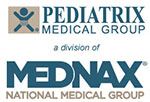NANNP Corner
Coming soon in 2019
The Centers for Disease Control and Prevention recently announced on the group B streptococcus (GBS) neonatal providers page that the current GBS guidelines, drafted in 2010, will be retired in 2019 when new guidelines become available from other healthcare partners. Similarly, in the December 2018 issue of Pediatrics, an article titled “Management of Neonates Born at ≥35 0/7 Weeks’ Gestation with Suspected or Proven Early-Onset Bacterial Sepsis” detailed new recommendations from the American Academy of Pediatrics (AAP) that would result in fewer infants being exposed to antibiotics at the time of birth.
As many of us are aware, the 2010 algorithm for secondary prevention of early-onset GBS disease among newborns uses a categorical risk factor assessment that first evaluates infants for signs of neonatal sepsis. However, under the current guidelines, even if an infant does not show signs of sepsis, there are several other risk factors that should be considered when determining whether the patient should be treated with antibiotics, including maternal chorioamnionitis, GBS status of the mother, whether a mother with positive or unknown GBS status received adequate treatment with antibiotics, and gestation and duration of membranes being ruptured. Once these risk factors are evaluated, the provider can then make decisions about which laboratory studies to collect and whether to start antibiotics.
The article in Pediatrics discusses two other options for risk stratification. One is a multivariate risk assessment that employs an early-onset sepsis (EOS) calculator in combination with the infant’s physical exam (ie, evaluating whether the infant appears well, equivocal, or ill). Providers can then make patient-management decisions based on this calculated score. The second option is based primarily on the infant’s physical exam. When selecting a method, it’s important to remember that the risk of EOS in infants age 35 0/7 weeks or older who appeared well at the time of delivery is 60% to 70% lower than for those who did not appear well. And an Italian study demonstrated that providers requested fewer laboratory studies and prescribed antibiotics less often for well-appearing infants who were evaluated with frequent physical exams than for those who were treated based on their categorical risk.
The AAP recommendation specifies that any of the above risk stratification systems may be used but each facility should have a plan for stratifying and managing infants with EOS based on what is medically appropriate for each unit (eg, does a facility have enough trained staff to assess an infant for signs of illness every 3 hours for 24 hours?). In addition, the article states that EOS only can be diagnosed by a positive blood or cerebral spinal fluid culture; ampicillin in combination with gentamicin still is the recommended treatment regime for confirmed cases; and that if the blood cultures remain negative after 36 to 48 hours, antibiotics should be stopped unless there is other evidence of an ongoing infection.
Look for the new AAP and CDC guidelines in 2019.
Reference
Puopolo, K. M., Benitz, W. E., & Zaoutis, T. E.; Committee on Fetus and Newborn, Committee on Infectious Diseases. (2018). Management of neonates born at ≥35 0/7 weeks’ gestation with suspected or proven early-onset bacterial sepsis. Pediatrics, 142(6). doi: 10.1542/peds.2018-2894


